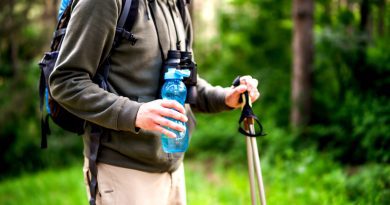
What Are the Benefits of Using Trekking Poles?
As the morning mist clears and the rugged trail beckons, I stand poised at the head of yet another path that promises both challenge and charm. It’s here, amidst the whispers of the ancient woods and the silent stories of the stones underfoot, that a question often arises among my fellow wanderers: What are the benefits of using trekking poles? It’s not merely a question of convenience—it is one of enhancing the journey itself.
Exploring the Terrain: Options and Challenges
Trekking poles, often seen as simple tools, are in fact rich with potential to transform a hike. Some people praise them as being essential, while others see them as nothing more than burdens.
Options Provided by Trekking Poles:
- Stability on Uneven Terrain: Poles provide two additional points of contact.
- Reduced Impact on Joints: Especially beneficial on descents.
- Increased Speed and Endurance: Aid in maintaining a consistent rhythm.
Challenges and Misconceptions:
- Perceived Complexity: Some believe poles complicate rather than simplify.
- Initial Discomfort: Adapting to the use of poles can be awkward.
- Dependence: Potential over-reliance on poles can detract from natural walking strength and technique.
The Steady Climb: Harnessing the Benefits
My journeys over peaks and through valleys have shown me the undeniable value of trekking poles. Here’s how I’ve come to harness their benefits:
- Enhanced Balance and Stability: In the uncertain terrain of high trails or slippery slopes, poles act as extensions of one’s own limbs, granting a grace otherwise unattainable. Each pole plants firmly, offering assurance with every step.
- Joint Health and Longevity: Descending a steep incline puts pressure equivalent to several times your body weight on your knees. Poles absorb a significant portion of this impact, thus preserving the integrity of your joints.
- Efficiency in Motion: By engaging the arms and shoulders, poles transform hiking into a full-body exercise, distributing effort more evenly and increasing endurance. They help push past fatigue, allowing for longer treks.
- Rhythmic Movement: The rhythm established by walking with poles can elevate the act of hiking from mere travel to a meditative experience, where each step and breath are synchronized in a dance with nature.
Tools for the Trail
To fully utilize trekking poles, a few key resources are necessary:
- Quality Trekking Poles: Adjustable, lightweight, and with shock-absorbing features.
- Proper Technique Training: Learning the correct use from experienced hikers or guides.
- Regular Practice: Incorporating poles into various hiking scenarios to adapt their use seamlessly into your style.
The Path Concludes
Reflecting on the miles traversed and the trails conquered, the benefits of using trekking poles become clear. They are not merely aids; they are instruments that enhance the symphony of hiking. They allow one to walk longer, stand taller, and recover faster. They are, in many ways, a bridge—between the human body and the wild lands it yearns to explore.
As I prepare for my next departure, my trekking poles rest by the door, ready to strike the ground and tap the rhythm of the journey. They are companions in the truest sense, silent yet strong. With them, I step not just onto the path but into a story, each pole plant writing a line in the saga of the wild.






